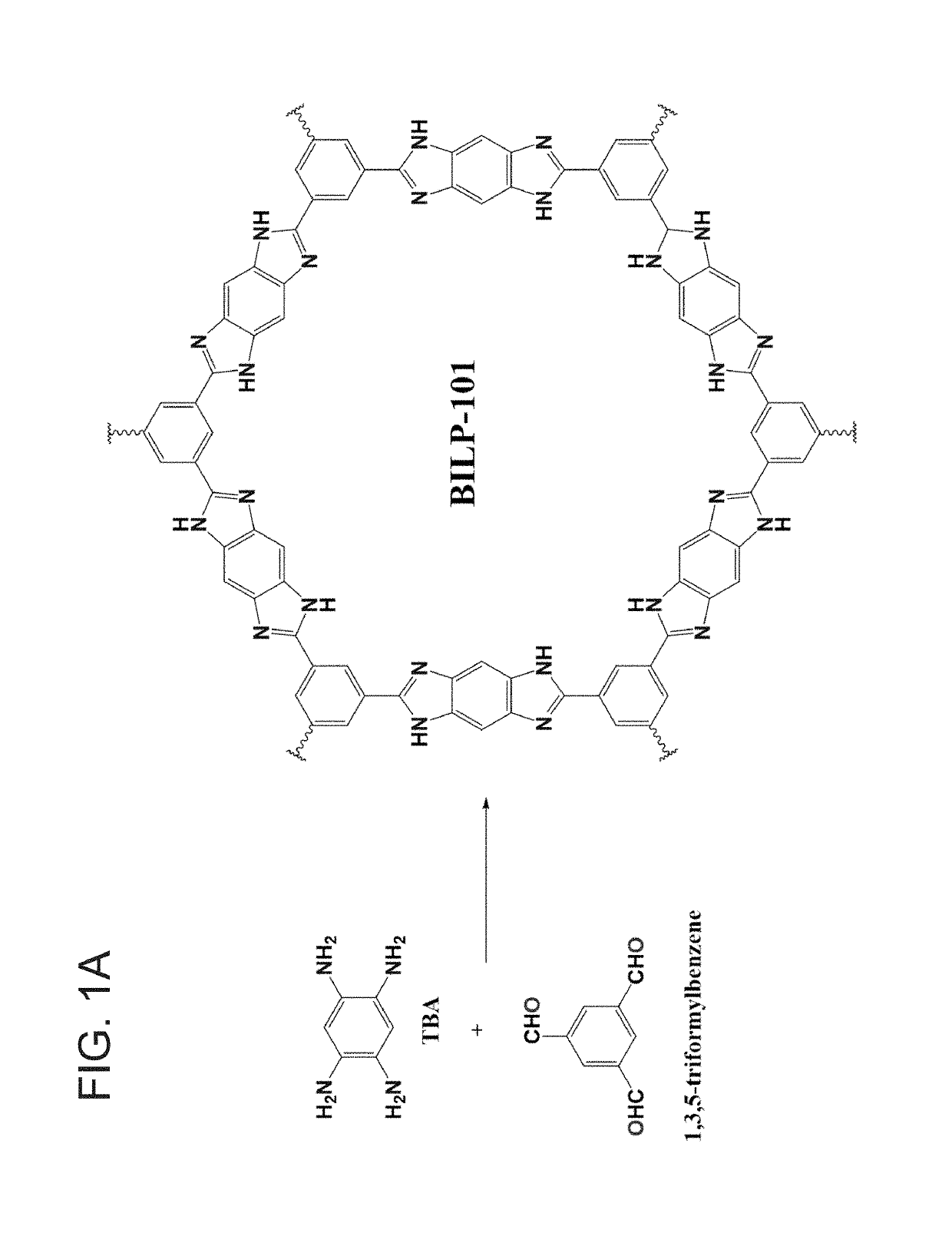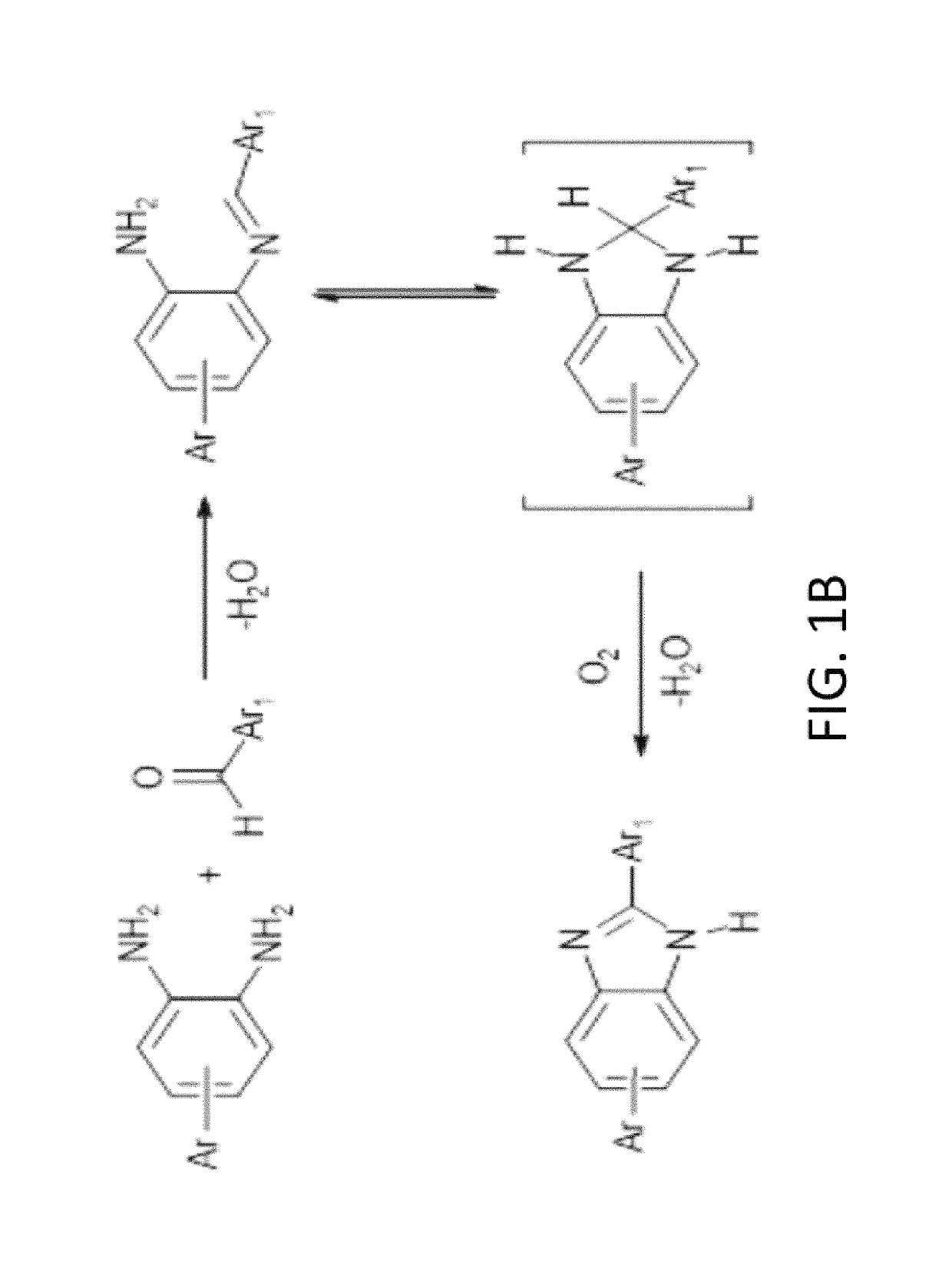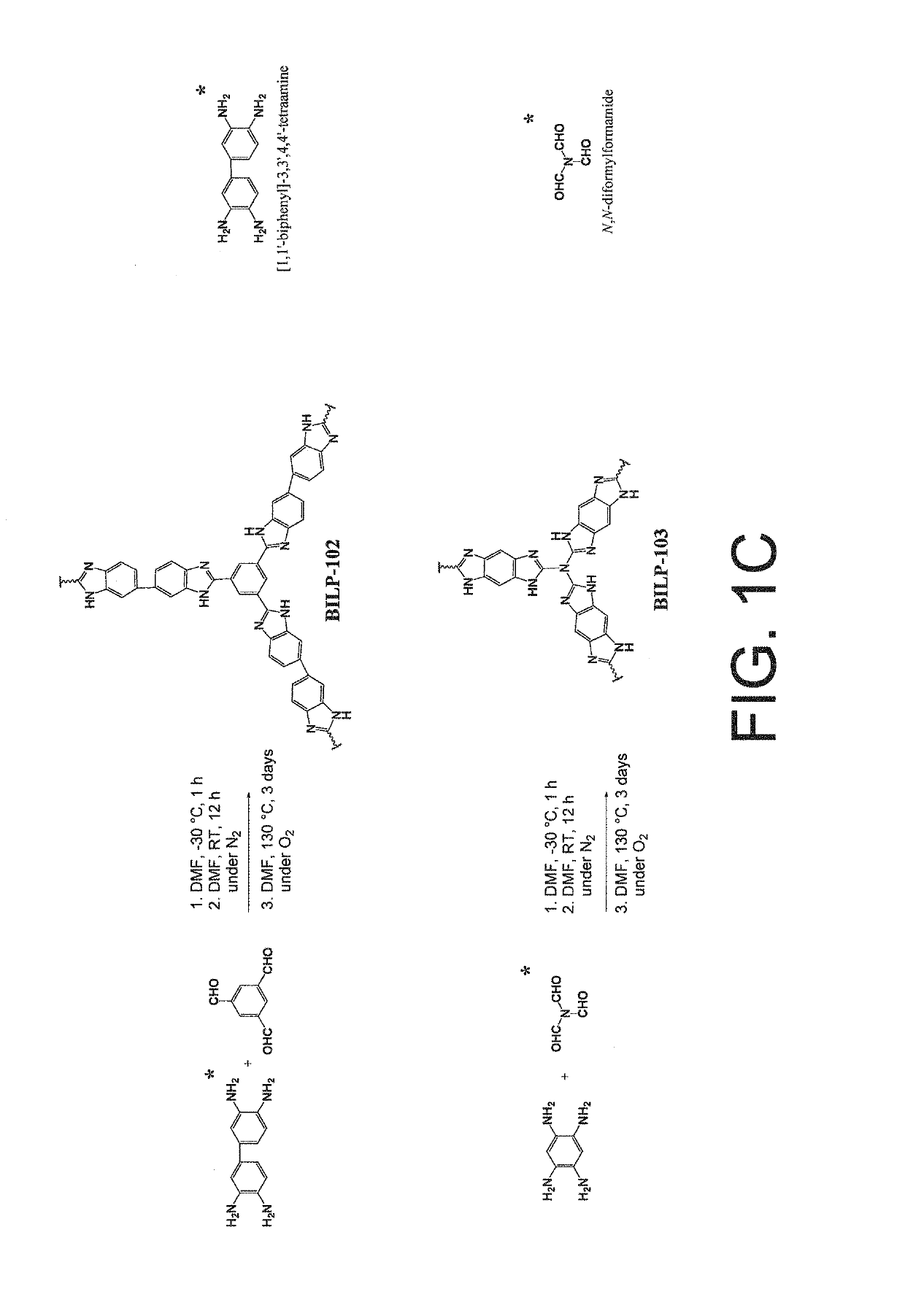Polymer for carbon dioxide capture and separation
a carbon dioxide and sorbent technology, applied in the field of carbon dioxide sorbents, can solve the problems of inefficient cross-linking between reactants, poor chemical and thermal stability of state-of-the-art adsorbents, and inability to create polymeric adsorbents, etc., to achieve high co2/n2 selectivity, reduce the formation of delamination or voids, and reduce the effect of void formation
- Summary
- Abstract
- Description
- Claims
- Application Information
AI Technical Summary
Benefits of technology
Problems solved by technology
Method used
Image
Examples
example
[0059]An embodiment of the invented porous benzimidazole-linked polymer (hereinafter BILP) is poly[1,3,5-Tris(benzodimidazole) benzene and is depicted in FIG. 1A as BILP 101. It is synthesized by a template-free polycondensation reaction between commercially available aryl aldehyde and amine based monomers: The protocol in this example is merely illustrative inasmuch as other polymers BILP 102 and 103 may also be produced hereby, those other polymers depicted in FIG. 1C. Suitable monomers for modification of BILP 101 include 1,1′-biphenyl]-3,3′4,4′-tetraamine to produce BILP 102. (The second monomer in the BILP-102 protocol is 1,3,5 triformylbenzene.)
[0060]Suitable monomers for modification of BILP 101 include N,N-diformylformamide to product BILP 103. The first monomer in the BILP 103 protocol is 1,2,4,5-benzenetetramine tetrahydrochloride.
[0061]1,2,4,5-benzenetetramine tetrahydrochloride was mixed with anhydrous DMF and homogenized. The resultant homogeneous solution was cooled (e...
PUM
| Property | Measurement | Unit |
|---|---|---|
| pore size distribution | aaaaa | aaaaa |
| weight percent | aaaaa | aaaaa |
| weight percent | aaaaa | aaaaa |
Abstract
Description
Claims
Application Information
 Login to View More
Login to View More - R&D
- Intellectual Property
- Life Sciences
- Materials
- Tech Scout
- Unparalleled Data Quality
- Higher Quality Content
- 60% Fewer Hallucinations
Browse by: Latest US Patents, China's latest patents, Technical Efficacy Thesaurus, Application Domain, Technology Topic, Popular Technical Reports.
© 2025 PatSnap. All rights reserved.Legal|Privacy policy|Modern Slavery Act Transparency Statement|Sitemap|About US| Contact US: help@patsnap.com



